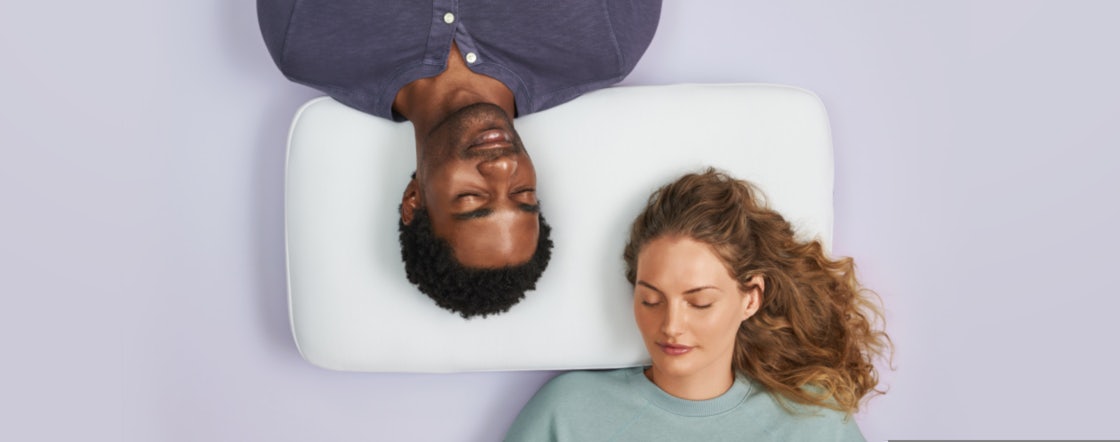
Yoga for Sleep:
17 Poses to Help You Relax
*This article is for general information purposes only and is not intended as medical or other professional advice.
There’s nothing worse than not being able to wind down after a long day. Lying awake at night can start a vicious cycle of sleeplessness that can impact your well-being and productivity.
Fortunately, there are natural ways to help your body relax — yoga is one of them. While some people may think they can’t do yoga, or that they aren’t flexible enough, that’s not always the case. There are many simple and relaxing yoga poses that can be adapted to all bodies.
Certain yoga poses can help you stretch, relax and get in a restful mindset for a good night of sleep. The poses we outline focus on the breath and putting the body in positions that allow for optimal blood flow to the brain, all of which encourage a calm state.
Warning: Those with injuries or chronic pain should approach these poses with caution. Consult your doctor before starting any exercise regimen.
1. Wide-Legged Forward Bend: Prasarita Padottanasana

Relaxes the lower back, hips and spine.
Not only does this standing pose help stretch and strengthen the hamstrings, calves, lower back, hips and spine, but forward bends are known to be very calming. Here’s how you can reap the rewards of both forward folds and inversions by letting your head hang and your neck relax.
2. Standing Half Forward Wall Bend: Ardha Uttanasana

Stimulates the organs for better digestion.
This variation of the forward fold lengthens the spine and stimulates the abdominal organs and belly, which has been said to improve digestion. It’s a great way to get your entire body ready for rest and relaxation.
3. Standing Forward Bend: Uttanasana

Calms the mind and relieves stress.
Another variation of the forward fold, Uttanasana is a great standing stretch to help calm the brain and relieve stress. A pose that’s easy to perform anywhere, it’s a great addition to any calming yoga sequence.
4. Three-Part Breath: Dirga Pranayama

Focuses attention and grounds the body.
When doing seated yoga poses, it’s helpful to start with a breathing exercise to focus your attention and ground the body. A three-part breath sequence can help slow your breathing and add to your overall relaxation.
5. Seated Spinal Twist: Ardha Matsyendrasana

Opens the rib cage and relaxes the spine.
This pose can open your rib cage and relax the spine. It can also help stretch the shoulders, hips, back and neck. While performing the pose, allow your spine to lengthen and keep the crown of your head elevated toward the ceiling.
6. Reclining Hero: Supta Virasana

Lowers the blood pressure and calms the body.
Supta Virasana can be very relaxing, but keep in mind that you’ll likely need some props for this one. Many people like to use a bolster or a stack of pillows under their back. Remember, you don’t need to overextend your body to reap the benefits of this pose.
7. Head to Knee: Janu Sirsasana

Stretches the core and eases digestion.
This restorative pose can help stretch the core and ease digestion. While performing this pose, ensure you’re not rounding your spine — the idea is to lengthen.
8. Child’s Pose: Balasana

Increases circulation to the head, relieving tension.
This is another pose that encourages blood circulation to the head which can help with relaxation and tension relief. One of the more well-known poses, Balasana allows you to stretch your spine, shoulders and neck.
9. Sphinx Pose: Salamba Bhujangasana

Opens the chest and helps combat stress.
This stress-relieving pose can help stretch the spine as well as the chest, lungs and abdomen. Some people like to perform this stretch with the help of a rolled-up towel in a U-shape under their belly to help support the stretch.
10. Locust Pose: Salabhasana

Stretches the spine and stimulates the abdominal organs.
Salabhasana is a great starting place for beginner yogis because it prepares the body to do deeper backbends. Known as a “baby backbend” this pose allows your spine to lengthen and your chest to open. It also stimulates the abdominal organs for eased digestion.
11. Cat and Cow Pose: Marjaryasana and Bitilasana

Eases back pain by stretching the back and flank muscles.
These two poses, often performed together, are helpful for people that wake up with back pain. Since they stretch the back and flank muscles, these poses are said to be relaxing and restorative.
12. Knees to Chest: Apanasana

Improves circulation and comforts the body.
This simple pose is said to help relax the mind and body by improving blood circulation and stretching the spine. The act of hugging your legs into your body can be comforting and relaxing.
13. Reclined Bound Angle: Supta Baddha Konasana

Stimulates the heart and improves circulation.
The full version of this pose can require a bit more flexibility, but keep in mind that you can place blocks or rolled up blankets under your knees as a modification. The pose lets you release, breathe and allow gravity to help you stretch.
14. Supine Spinal Twist: Supta Matsyendrasana

Aids the kidney and liver in digestion.
If your glutes, chest and obliques are in need of a stretch, this is the pose to do. Often done toward the end of a yoga session, the pose is said to help counteract the hunched back associated with sitting in a chair all day. It’s also, of course, very relaxing.
15. Legs Up the Wall: Viparita Karani

Eases anxiety and helps soothe insomnia.
Viparita Karani is simple but is said to help ease a variety of symptoms including anxiety, insomnia and more. If you want to elevate the pose, you can put a bolster or towels under your lower back to increase the inversion.
16. Happy Baby: Ananda Balasana

Stretches the groin and calms the mind.
This pose stretches the inner groin and spine, and yogis say it calms the mind. If you’re unable to hold your feet with your hands, try modifying the pose with a yoga strap or belt looped around the arches of your feet.
17. Corpse Pose: Savasana

Puts the body in a state of rest.
Probably the most relaxing pose of them all, savasana is typically the last pose in a yoga class. It’s a restful posture and can be held as long as you like. If you breathe in and out long enough, who knows — you might just fall asleep!
Does Doing Yoga Before Bed Help Sleep?
The short answer is yes, however, you will need to do poses that relax the body and mind. Studies have shown that people suffering from insomnia who added yoga to their daily routine fell asleep faster, slept for longer and had better sleep quality.
Of course, it’s important to be aware that not all yoga is appropriate for bedtime. Some poses are focussed on energizing the body and may have the opposite effect on helping you sleep. It’s also important to listen to your body — if you ever feel uncomfortable or like you’re over-exerting your body during these stretches, stop immediately.
Another easy way to make sure you get a good night’s rest? Sleep on a comfortable mattress and with sheets that are soft and breathable.





